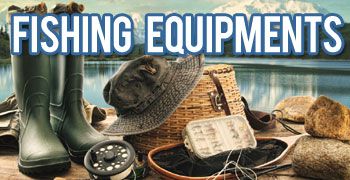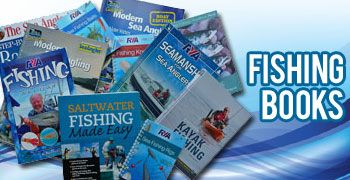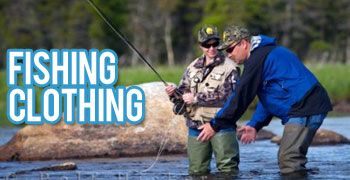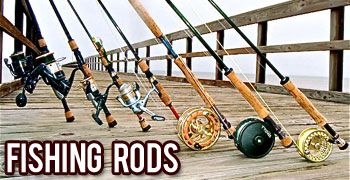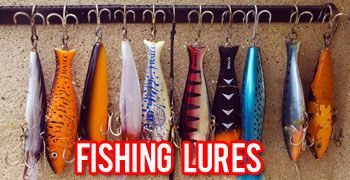Fishing in the broad sense is a fishing activity. Catching fish can be a job, hobbies, outdoor sports or outdoor. In practice, the fishing can be done at the edge or in the middle of the lake, ocean, river, and other waters with a fish targets.
In practice and from the quarry, not all fish fishing activities is always a fish fruition. Fishing is not always synonymous with fishing fish into the target, fishing can also get frogs, turtles, fish, squid, octopus, fish and even whales.
Basically, fish fish can be distinguished based on natural prey, namely:
- Freshwater Fishing
- Sea-water Fishing
In general, fishing was only one way to catch fish. Therefore, many ways to catch fish or other techniques.
Fishing History
Fishing in the sense of catching fish, has been known since the days of civilization about 10,000 years ago. This is evident from the archaeological relics of the old caves in Europe which explains that fishing activity has been used since the discovery of the bones, hook, and drawing and painting at the age of rocks found in the caves.
Start fishing techniques vary in the time Neolithichum, or the young stone age. Starting at this age, or about 4000 to 8000 years ago, the fishing technique later evolved into a more modern and is still used today.
So even with a way of processing the fish, the current way of managing the fish still made with the same technique, for example, how to preserve the fish with salt fish or smoked in a manner that is still used.
Fishing Techniques
From the definition of fishing, fishing is considered as one way to catch a fish or aquatic animals. In addition to fishing, there are many techniques to catch the fish or aquatic animals. Here are some common techniques for catching fish or aquatic animals;
1. Using Hand
Catch fish by hand can be done in shallow waters, such as small streams, rice fields or other. Understanding catch fish by using this hand became widespread in fishing terms, ie without a fishing rod. Joran itself is a fishing rod that is frequently used in catching fish in the sea.
2. Spear
Catch fish using a spear can be said to be easier than catching fish by hand. This arrest has been used by humans for a long time.
Spearheading made in such a way, such that the hook caught fish can not escape from the eyes of his spear.
Spear used in fishing can be a variety of shapes, from short to have handles which has three branches in the end, or it could be just one lance-shaped eyes.
3. Harpoon
Currently, how to use a fishing harpoon technique. Harpoon is itself a form of spear fishing equipment is given a long rope.
Catch fish this way is usually by boat. This is done to pursue fish to be targeted inducement.
Harpoon fired by using a tool thrower. This tool is usually used to catch large fish, such as whales, sharks, rays, and so forth. after exposed to harpoon fish, the fish is pulled and then pulled up the deck of the ship or boat.
4. Fishing lines
At current fishing practices are the most popular, practical, and favorites performed by using fishing line. The fishing line is also called strings. <br /> At the end of the string, mounted one or more eye time, which in each eye hook baited with live or artificial bait.
Catch fish in this way can be done in the river, lake, waterfront, or even could be in the middle of the ocean by boat as a means of transportation.
5. Sucking water
Another fishing technique that can be done is to suck water. Usually this is technically not devoted to catching fish. This technique is more often used to capture various types of animals in the sea floor or mollusks, are like clams, lobsters, crabs, and animal like.
How to suck up the water using a compressor that works by sucking water into the boat and then filtered and the water is then discharged back into the sea.
6. Net
This fishing technique is done by scooping with nets or cast nets are then removed. This technique can also be done by installing nets by means wait for a certain time then the new mesh was removed.
When the fishing is done at sea, this technique can be done by lowering the nets into the sea with a boat that runs slowly followed, so that the mesh forming a circle.
By using this technique, anglers usually fish or fishermen can catch shrimp, small fish or squid. This technique is usually done at night with a lamp as a light for fishermen. This is done to attract the attention of more fish in the sea.
7. Kites
How this is done by raising a kite made of a waterproof material that is then flown using a rope.
Kite strings that had previously been given at the tail end of the rope is given the time and feed the eye. Keep eyes of times and the bait in the water.
This method is usually done in favorable weather. This technique is less effective if done at cuaxa not support, such as rain or wind was strong.
8. Knocked a hole in the ice
Fishing with the way this is done in a way to drill or make a hole in the ice fishing gear in order to get into the water through the hole that was created earlier.
Then hook baited inserted into the hole until the water broke through the eyes under a layer of ice that had been given the last hole. This will attract attention and also outwit the fish in the sea.
9. Trap
How this is done is not only to catch fish, but can also be used to catch other marine animals are usually located in the bottom waters, such as lobster, crab, shrimp, and animal like.
Fishing is done by using a device that is made of iron, aluminum, or bamboo traps by putting these in a particular area. Previously, these traps have been marked or buoy to easily find it.
10. Help other animal
In China and in Japan, fishing techniques typically use a type of waterfowl that have been trained. The trained bird water bird named Cormorant.
This technique is usually performed together, for example, a number of fishermen who also has a water bird. By boat, the fishermen then form a circle and ordered the birds to catch fish with the direction to the center of the circle.
After successfully chasing birds and fish, then a bird back to the boat and put the fish catch. This technique has long been used in these countries (China and Japan).
11. Toxins
The fish poison has been banned in use. This technique can damage coral reefs and destroying marine life as a whole. This technique is usually aided by using Barbasco, cyanide, or potassium which is a chemical compound with the aim to make the fish become weak, but many fish died instantly.
So is the discussion of understanding and techniques in fishing. There are many fishing techniques or fishing is still done to this day, such as electric shocks, using explosives or bomb the ocean, and fishing to the sea floor. An attempt to get the fish but in a way that is not good.
Hopefully with this discussion, we can add insight and knowledge. May be useful. Hopefully you also can better appreciate the environment, one of which premises the way fishing is good fishing.
